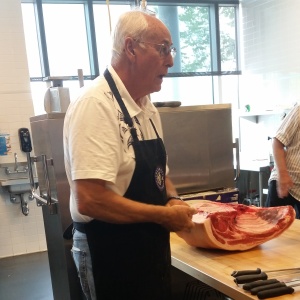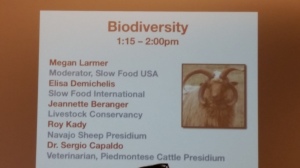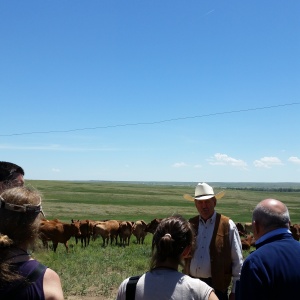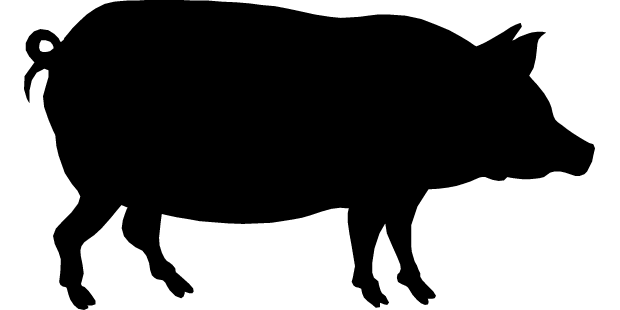Slow Meat Day 3
Posted: July 18, 2014 Filed under: Uncategorized Leave a commentFar and away the best day of Slow Meat 2014 for me. I was honored to meet Francois Vecchio, butcher and salumier. Watching him break a pork shoulder was akin to a Catholic listening to a homily from the Pope in the Vatican.
Slow Meat Day 2
Posted: July 18, 2014 Filed under: Uncategorized Leave a commentThe second day of Slow Meat in Denver, Colorado is where things got interesting. And confusing. Less than 24 hours removed from our trip to the Lassiter Ranch, purveyors of Beefmaster cattle, one of the topics we were discussing was Biodiversity.
Clearly, discussing biodiversity for 45 minutes was not nearly enough time. However, Beefmaster cattle (as well as Angus and Hereford) were specifically called out as being detrimental to biodiversity. I was confused. We spent most of the day at a ranch devoted to this breed, then the next day are told that it isn’t what we want in Slow Meat…curiouser and curiouser.
What biodiversity is aiming for is a return to heritage breeds, to stock that isn’t a one size fits all for the consumer. I spoke to one pig farmer from Virginia, Josiah Lockhart for quite some time, and he listed off the breeds he prefers for lard, for bacon, for hams, etc etc. He raises a very rare breed, the Mule Foot, which he retails at $9/lb. Quite a hefty price, but he is booked 3 months ahead on orders. Being close to the Washington, D.C. metro area doesn’t hurt.
You will notice at the bottom of the page the name Dr. Sergio Capaldo. This is a man dear to me and to my bosses, as he is the man almost solely responsible for the propagation of the Piedmontese breed.
After our symposiums, we watched an entire bison broken down from start to finish. 
Again, I was slightly confused. The bison they used was frozen. Being a butcher, I did not envy the men as they wrestled with cutting through what was, honestly, almost solidly frozen bison. I would have expected something a little…fresher from Slow Meat. This bison would later be served as carpaccio among other dishes.
Slow Meat Day 1
Posted: July 18, 2014 Filed under: Uncategorized Leave a commentA few weeks ago, I was given the opportunity to travel to Denver, Colorado for a conference dedicated to the production and distribution of sustainably raised animal proteins. The conference was run by Slow Food USA, and was entitled, appropriately, Slow Meat. The conference lasted three days and included a farm tour, an exhibition of bison butchery, and a number of symposiums lead by men and women dedicated to bringing good meat to good people.
Day one was spent on the Lassiter Ranch, owned by Dale Lassiter.
The Lassiter Ranch is just outside of Denver, and is, in a word, expansive. The land out there is sparse, not exactly suitable for raising cattle solely on grass. Lassiter, however, has perfected his methods, and, by growing Beefmaster cattle (a breed developed by his father some years ago in Texas), has a booming business. His cattle require 30 acres of pasture per head. He raises around 900 head.










